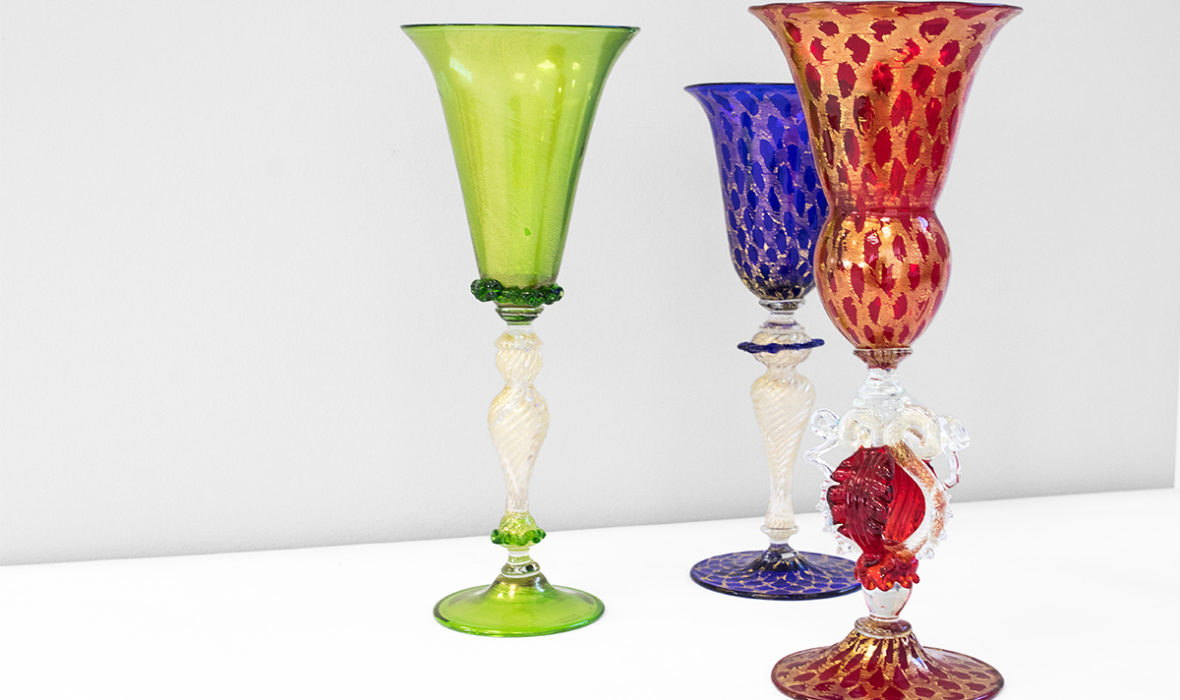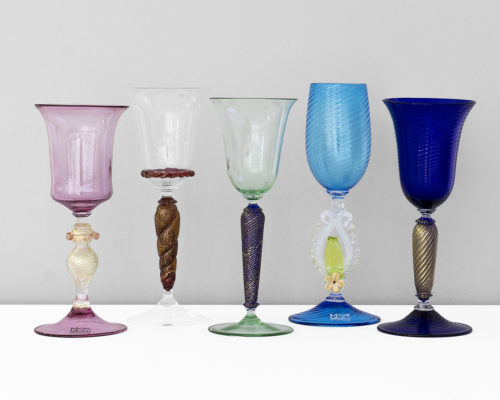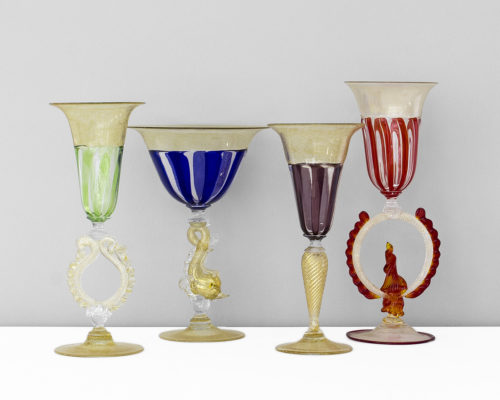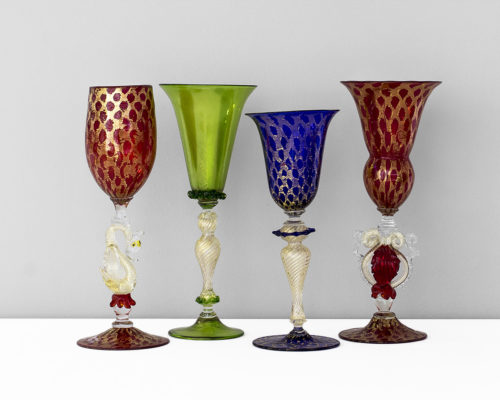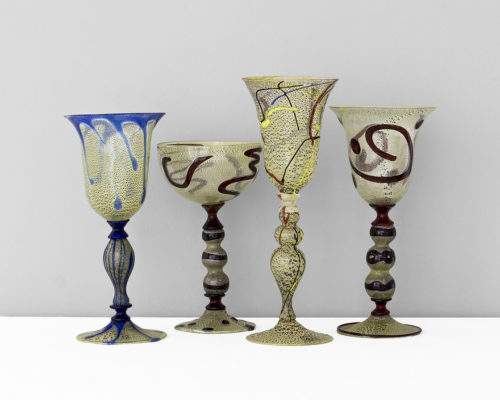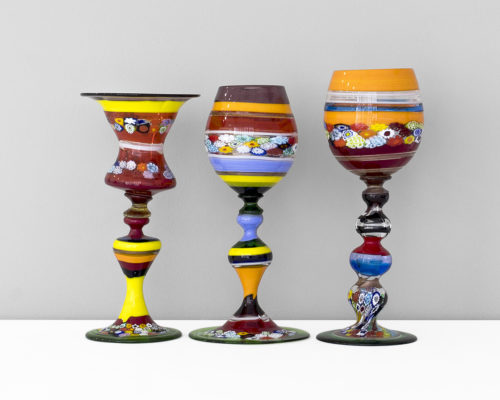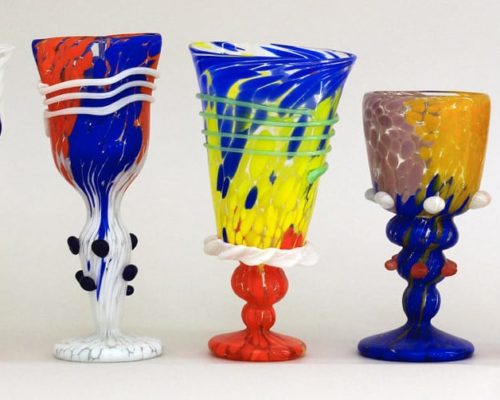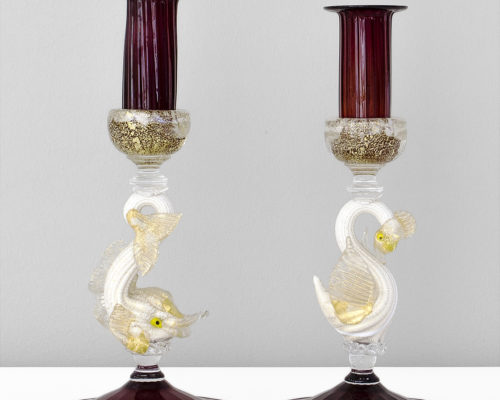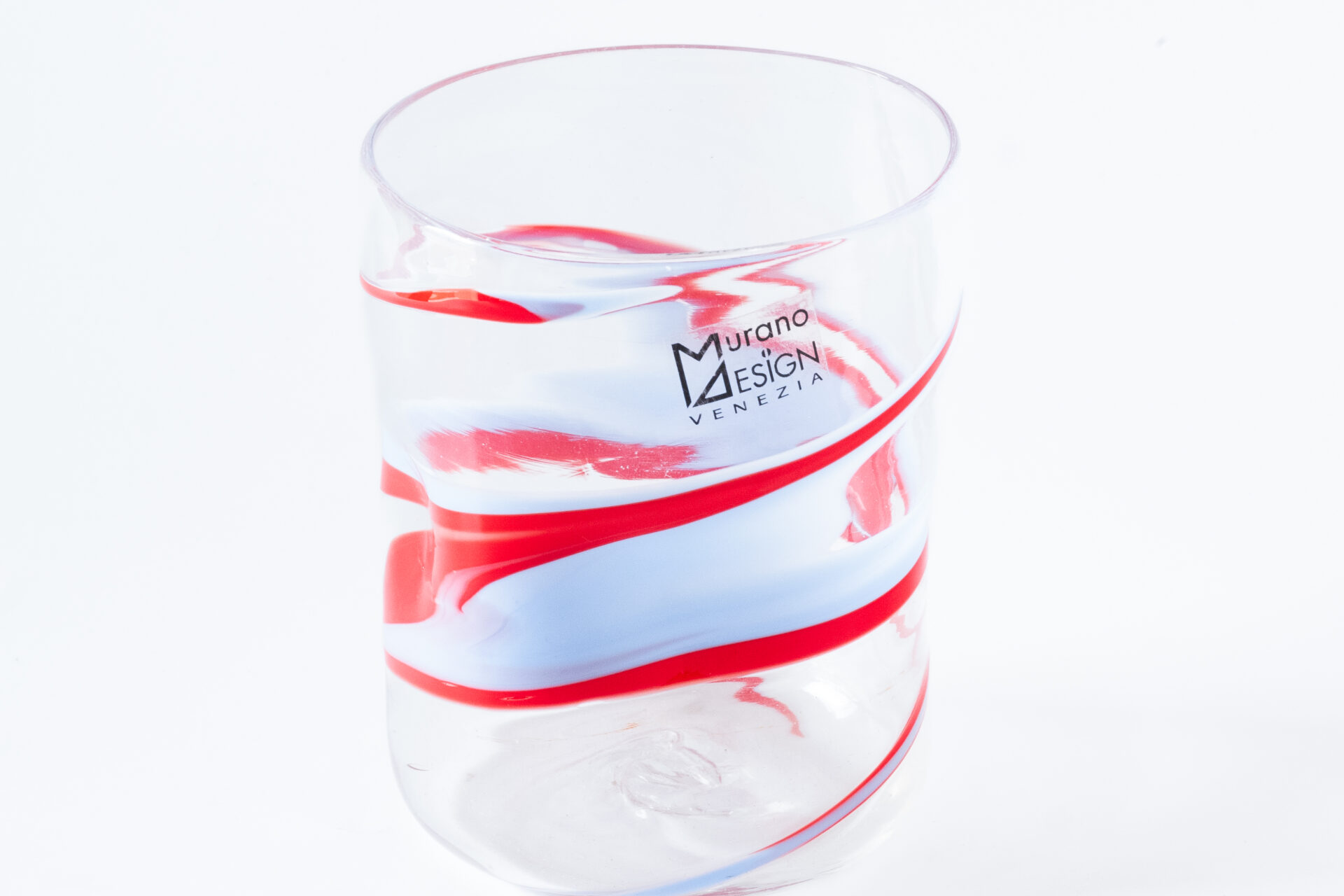In spite of its name, which recalls a lighthearted little boy from the lagoon city (Tipetto in Italian means little boy ), the Venetian Tipetto is a peculiar glass goblet, with showy decorations on the stem and belonging to the Venetian tradition of blown glass art.
In this article we want to tell you a little about it, how to recognize it and why to fall in love with it.
How to recognize a Venetian Tipetto
Actually, calling the Tipetto a “chalice” is not wrong, but it would be like calling a goblet a “glass.” In fact, the Tipetto is a particular type of glass, more specifically a particular Murano glass goblet.
Venetian Tipetto and Chalices: the differences
Technique of blown glass
If you would like to see how we master glassmakers of Murano Design work, on this page there are photos of us at work while shaping or blowing air into glowing glass (me writing this is the handsome one), and the process is explained step by step.
But in a nutshell we can say that the process of making Murano glass consists of taking a glowing mass of glass and blowing into it with a very long straw!
And then putting the cluster (which is a little less “cluster” at that point) back into the furnace, and withdrawing it out, and blowing, and putting it back in, and withdrawing it out, until it has the shape we want.
You can see how tiring the work is, but it also gives great satisfaction, because in the end each Tipetto is a unique piece, in which you can touch the passion and hard work of the master glassmaker who made it!
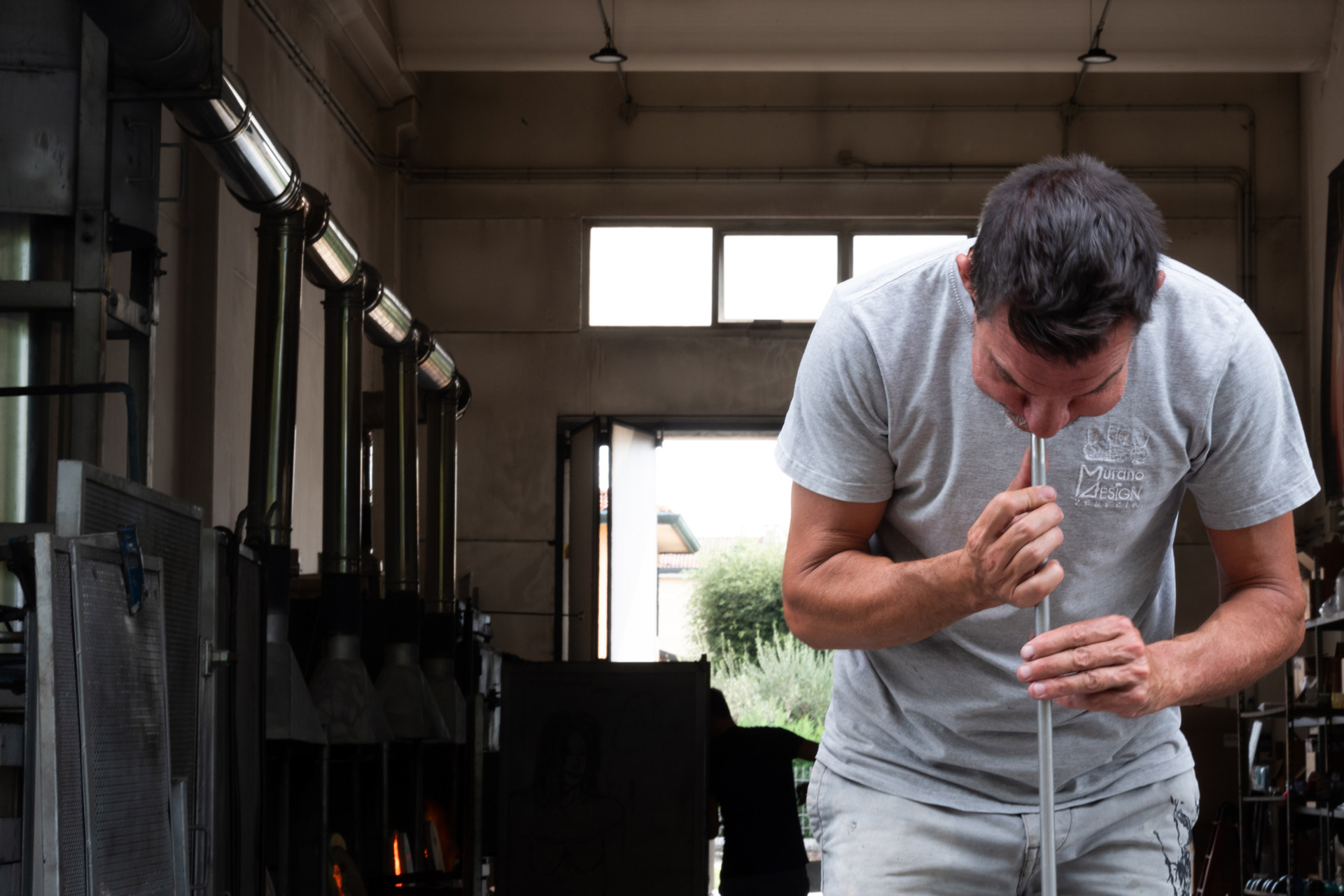
Shape of the Venetian Tipetto
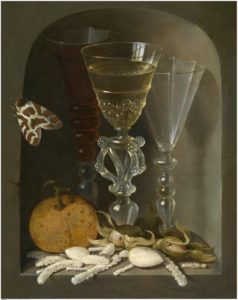
What really distinguishes a Venetian Tipetto from a somewhat extravagantly colored chalice is the particular shape of the stem.
Take note, all the Venetian Tipettos you will see have a very elaborate stem. In fact, it is on this element that the creativity of the master glassmaker has to focus to bring a Tipetto to life, not a goblet! And it is this difference from other glasses and that made them, in the 1500s, famous throughout Europe!
“Can I use a Venetian Tipetto for drinking?”
Caterina De Medici, great-granddaughter of the famous Lorenzo De Medici (patron of the most famous artists of the Renaissance, including Michelangelo), had inherited artistic taste from her great-grandfather, and when she left Italy to marry the King of France, she took her precious Venetian Tipetti with her, causing the fashion to explode throughout Europe (there were no influencers, but being queen of France and granddaughter of Lorenzo the Magnificent still gave you a certain visibility and power of emulation).
Don’t think they are wasted like that though! Don’t underestimate how nice it is to have an object with such an ancient history in the home, which was part of the finest fashion of the golden centuries of the Republic of Venice.
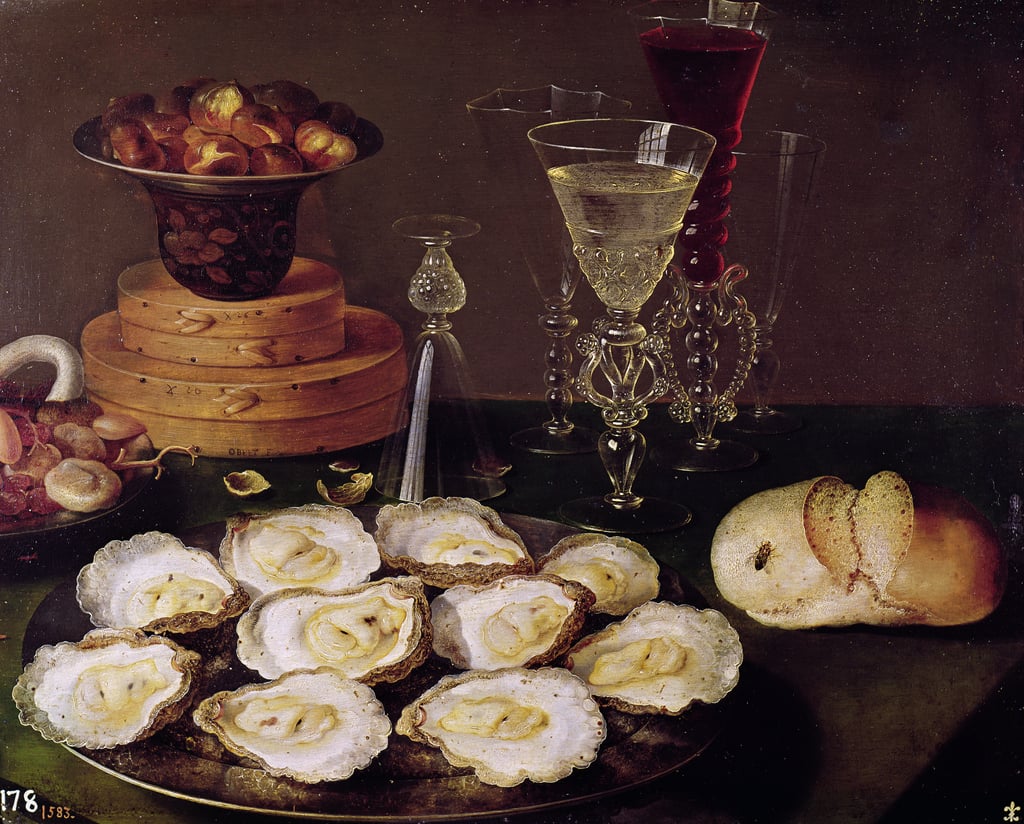
Our Venetian Tipetti
By showing you our Tipetti now we hope you can realize the love that went into forging them.
Remember that they are all unique pieces and are like children to us master glassmakers!
Let’s start with introductions.
Classical and Traditional
Venice Tipetti
They are also the least lavish, perhaps the least daring (we Venetians liked luxury, but there must have been some more morose Doges, right?).
If you want to see them in more detail go here.
Tipetti with Incalmo Stripes
“Incalmo” in Venetian means “grafting.” To make this Tipetto, while the glass is still warm and we are working it, we add colored glass strips and a crystal band on top of the mouth of the goblet (thus making a “graft,” precisely).
If you open the page perhaps you will see better what we are talking about.
Burmense Tipetti
These are the types of Tipetto that most flaunt their Venetian nobility, the ones from which we imagine Catherine de Medici sipped wine as she enchanted French nobles with her Italian elegance.
Modern
The past should be treated as a great teacher, a sage who should teach you how to grow and renew what he has already done, so that his work is always kept current.
Tipetti are not just decorative glasses from the past, we believe they are timeless objects, capable of adapting to modern needs and taste. It is the ability to renew itself that distinguishes a piece of simple craftsmanship from one of art, and we think the Venetian Tipetto is art!
Silver Tipetti
What makes the break with tradition is the innovative choice of decorating them with glass castings inside, according to the ‘inspiration of the master glassmaker. Each decorative casting will be unrepeatable and will make the Tipetto a unique piece, a moment shared only between you and its craftsman!
Murrine Canes Tipettos
We talked about this technique in this article here. If you don’t feel like going to reread it, we can tell you, in brief, that murrine is a very old technique (from well before anyone had any idea of building pilings in a lagoon in Northern Italy ). However, the technique was lost and was rediscovered and reused in Venice only in the 19th century (if we think about the whole history of the Serenissima, this fact, you will agree with us, is very recent!).
We have here taken the form of the Tipetto, an artifact of the 1500s and made it married to a technique of the 1800s!
Gaudì Tipettos
After all, who better to inspire us in creating ultra-modern Tipetti than the greatest exponent of modernism?
With this series we have made Venetian Tradition embrace Modernisme. Because ‘art must also be this: a meeting point not only between past and present but also between peoples and cultures.
Do you think Gaudi would have appreciated our homage?
Candelabra Tipettos
So we thought, why not make candelabra out of them?
The stem is the typical tipetto one (if not, it wouldn’t be a Tipetto, remember?), but we modified the goblet mouth to add a candle holder, so that Tipetti are still usable objects!
Let’s get to know each other!
With this article on Venetian Tipetti we hope we have excited you as much as we get excited about creating them, and if we have intrigued you, we would be happy to answer your questions and show you our precious creations.
To contact us, talk about tipetti, glass and design here:
